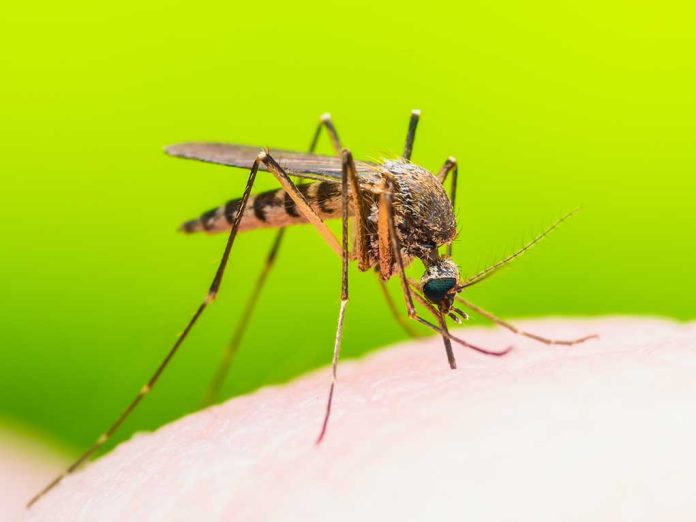
Connecticut faces a growing threat from Eastern Equine Encephalitis Virus (EEEV) as public health measures intensify to combat the rising number of infected mosquitoes.
At a Glance
- Connecticut is seeing an increase in mosquitoes testing positive for EEEV.
- Infected mosquitoes have been found in 10 municipalities this season.
- A white-tailed deer in Lisbon died from EEE last month.
- There is no vaccine for EEE, which has a 40% mortality rate.
- Residents are advised to take strong preventive measures.
Rising EEEV Threat in Connecticut
Connecticut is currently experiencing a surge in mosquitoes infected with the Eastern Equine Encephalitis Virus (EEEV). Over the summer, mosquitoes in 10 municipalities have tested positive for the virus, including Canterbury, North Stonington, and Ledyard, among others.
The initial discovery of EEEV-positive mosquitoes was reported in Canterbury on July 16. By late August, additional towns including Farmington and Manchester were added to the list. Last month, a white-tailed deer in Lisbon succumbed to the virus, marking the first confirmed animal fatality linked to the current mosquito season.
More mosquitoes test positive for WNV, EEE in Connecticut: Researchers https://t.co/xue3MqjNoE
— FOX61 (@FOX61News) August 28, 2024
Public Health Response and Citizen Awareness
In response to the escalating EEEV threat, local authorities have launched extensive mosquito tracking and eradication efforts. The Connecticut Mosquito Management Program is urging residents to take precautions such as using insect repellents, wearing full-length clothing, and eliminating stagnant water around their homes to prevent mosquito breeding.
“We will continue to closely monitor mosquitoes for virus amplification and encourage everyone to take simple measures such as wearing mosquito repellent and covering bare skin, especially during dusk and dawn when mosquitoes are most active,” Armstrong said.
Serious Health Implications
Eastern Equine Encephalitis is a severe illness with a 40% mortality rate. Even among survivors, significant brain damage is common. Typically, the United States reports 4-8 human cases annually, but the last major outbreak in 2019 saw an alarming 38 cases.
“This summer has been particularly hot, humid, and wet. Mosquitoes require water to develop into adults. With the warmer temps, that accelerates their generation time. So, I think all those factors are contributing to the situation,” said Dr. Philip Armstrong, chief scientist, Connecticut Agricultural Experiment Station.
Though no human cases of EEE have been reported in Connecticut this summer, neighboring states have seen several. The Connecticut Department of Energy and Environmental Protection (DEEP) has initiated mosquito control measures, including spraying in areas like Pachaug State Forest. Experts emphasize the need for proactive measures to avoid mosquito bites.
Key Preventive Measures
Residents are encouraged to adopt crucial protective practices. These include using bug spray, wearing long sleeves and pants, staying indoors during peak mosquito activity times, and keeping windows and door screens closed. Additionally, eliminating standing water in outdoor areas is crucial to reducing mosquito breeding grounds.
“I am a little concerned,” said Julie Breton of Simsbury. “We live back by the woods, so I’m often walking my dog through the woods when it’s nighttime. So, I try to be more cautious, and I always put bug spray on.”
Local governments and health agencies, including DEEP, the Connecticut Agricultural Experiment Station (CAES), and the Department of Public Health (DPH), are actively involved in disseminating information and taking measures to protect public health.
















